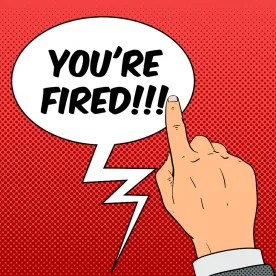Do you have a “no fault” attendance policy or some other way in which employees get points for absences? If so, be careful. A recent Eleventh Circuit matter, EEOC v. Eberspaecher North America, Inc. suggests that the Equal Employment Opportunity Commission (EEOC) wants to check out those policies to see if there is an ADA violation and may want to expand its search beyond one facility.
What Happened?
Joseph White, an employee at ENA’s Northport, Alabama facility, complained to the EEOC that he was fired for taking protected absences under the FMLA. According to the opinion, ENA has a point system to discipline employees for absences and tardiness, and White claimed that ENA gave him points for FMLA-covered absences. ENA’s employee handbook provided that employees receive two points for unscheduled absences and if an employee gets 10 points in a 12-month period, termination results. Per the handbook, employees would not get points for excused absences, including FMLA-covered absences. White said he got points for FMLA absences.
The EEOC issued a Commissioner’s charge against ENA, charging ENA with discrimination under the Americans with Disabilities Act Amendment Act (which we will call the ADA), listing only the Northport facility in the charge. Although the EEOC does not have enforcement power in the FMLA realm, its theory was that ENA violated the ADA by “firing [White] for taking FMLA-protected leave which, the EEOC asserts, is a ‘reasonable accommodation’ required” under the ADA. Also of note, this was a Commissioner charge, which means an EEOC Commissioner is filing the charge, not simply an employee. According to the EEOC website, the investigative process is the same.
Initially, the EEOC asked for information about ENA’s practices in Northport, where White worked. Later, the EEOC requested information about “each employee discharged from Respondent’s locations nationwide . . . for attendance infractions.” When ENA objected to providing information nationwide, the EEOC issued a subpoena and ultimately asked the court to enforce it.
The district court ordered ENA to comply with the subpoena but “only as it applie[d] to the Northport facility.” The EEOC appealed, and the Eleventh Circuit upheld the district court’s order.
What Does This Mean for You?
Although the Eleventh Circuit opinion is about the EEOC’s subpoena power, everyone should pay attention to this case. This may signal that the EEOC is looking to make law related to the ADA, attendance policies, and leave as a reasonable accommodation for a couple of reasons:
- White apparently complained about FMLA issues. The EEOC could have said the FMLA wasn’t one of their statutes and let it go. White could have then filed an FMLA lawsuit. Instead, an EEOC Commissioner issued a charge to look at the potential ADA issues.
- Even though ENA’s handbook said employees wouldn’t get points for FMLA absences, an EEOC Commissioner decided to look more closely at this claim. Again, the Commission could have just investigated White’s claim. Instead, the Commissioner filed a separate charge on the issue of whether employees were being denied leave as a reasonable accommodation under the ADA and sought nationwide discovery.
Commissioner charges are not all that common but are on the rise. According to the EEOC’s website, Commissioners have signed 29 charges in FY 2022 (as compared to 3 in each of FY 2020 and 2021). Clearly, one of the Commissioners thought that this attendance/leave as a reasonable accommodation issue needed a closer look and thought ENA was a good opportunity to do so.
If this is a trend, you want to get ahead of it. Review your attendance policies and how you are enforcing them. Make sure that protected absences are not getting lost in the shuffle and you are considering leave as a reasonable accommodation.





 />i
/>i

